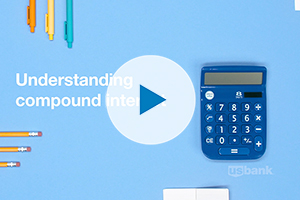The best way to manage cash flow constraints is to prevent them in the first place.
Your goal is to develop a set of practices that allows you to regularly cover costs, minimize money you’re owed and stockpile cash for future investment or emergencies.
Sometimes, this involves difficult choices. For example, if your business is still very small, you might have to turn down an otherwise attractive new contract if it incurs overwhelming upfront costs that your cash flow can’t handle.
Here’s how to minimize cash flow constraints so your business will have money on hand to pursue growth opportunities when they arise.
Improve your business savings
Improving your business savings is perhaps the most obvious way to preserve cash.
- Reduce costs: If you manufacture goods, look for ways to reduce per-unit production costs. If you have a service business, look for effective ways of acquiring new customers while increasing your savings on business outputs such as marketing.
- Lease instead of buy: If equipment or fleet expenses stretch your cash flow, consider leasing instead. You may pay slightly more over the long term, but you’ll keep more cash on hand and experience other benefits of leasing, such as having the product in its most trouble-free years and having the use of something you otherwise might not be able to afford.
Keep cash flowing
Invest in consistent invoicing and collection processes so there’s a smaller gap between when you spend money and when you get paid for goods or services.
- Make projections: Floating inventory or payroll for a month or two sounds doable, but you’re in business for the long haul. Project how your cash flow will affect your business after 12 or 18 months to get a better sense of the steps you should take today.
- Offer incentives for early payment: Charging late fees for unpaid invoices is a common practice, but it still leaves you cash-strapped until payment arrives. Try offering a discount to customers who pay early instead.
- Invoice more frequently: If you invoice once a month, you may have already lost valuable collection days. The sooner you invoice, the sooner you’ll get paid.
- Consider accepting credit cards:Consumers and corporations use credit cards to pay bills large and small. Incurring a small processing fee may pay off, if you are getting paid faster.
Access additional funding
Prevent a cash emergency by seeking additional funding sources before you need them. If you reach a point of desperation, it signals to lenders and investors that your business has bigger financial problems than a temporary cash crunch.
- Apply for a business loan: The best time to apply for a business loan is when you don’t need a small business loan. When business is good and cash flow is positive, you’ll potentially qualify for lower interest rates and launch a positive relationship with your bank.
- Apply for a line of credit: Borrow money, repay it and borrow it again when you need it. A line of credit can help you meet payroll, purchase supplies and fund day-to-day operations while giving you more flexible payment terms compared to a traditional small business loan.
- Find investors: If you have a solid business plan, investors may provide cash or loans that can help you prevent cash flow challenges. As a bonus, most investors share knowledge and experience and have relationships that can help you achieve smart, sustainable growth.
Even with these cash flow measures in place, it’s still beneficial to set calculated business growth goals and target good-fit customers for your stage and capabilities. You want to grow, but you want to grow in a way that allows you to always have a healthy cash flow.
Learn more about additional cash flow management strategies that could help your business.





